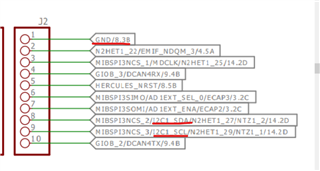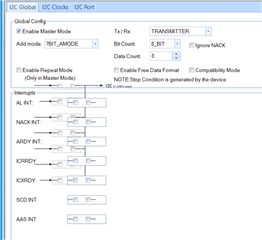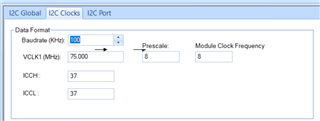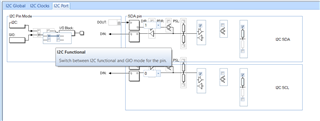Other Parts Discussed in Thread: HALCOGEN
Hi team,
Here's an issue from the customer may need your help:
Using the LAUNCHXL2 570LC43 development board, the customer attempts to communicate with I2C devices on other boards using the two pins of I2C1 that are brought out on the board. J2 numbers 1 (GND) 8 and 9 are used in the figure below and are connected to the GND and I2C pins on the other boards, respectively.

HALCoGen configuration is as follows:



The customer calls the i2cInit() function in the main function and tries to communicate with the device, but the program is stuck in the i2cIsMasterReady or i2cSendByte function. Grabbed both pins with an oscilloscope and did not see any waveforms. Can it be connected directly like this?
Could you help check this case? Thanks.
Best Regards,
Cherry



